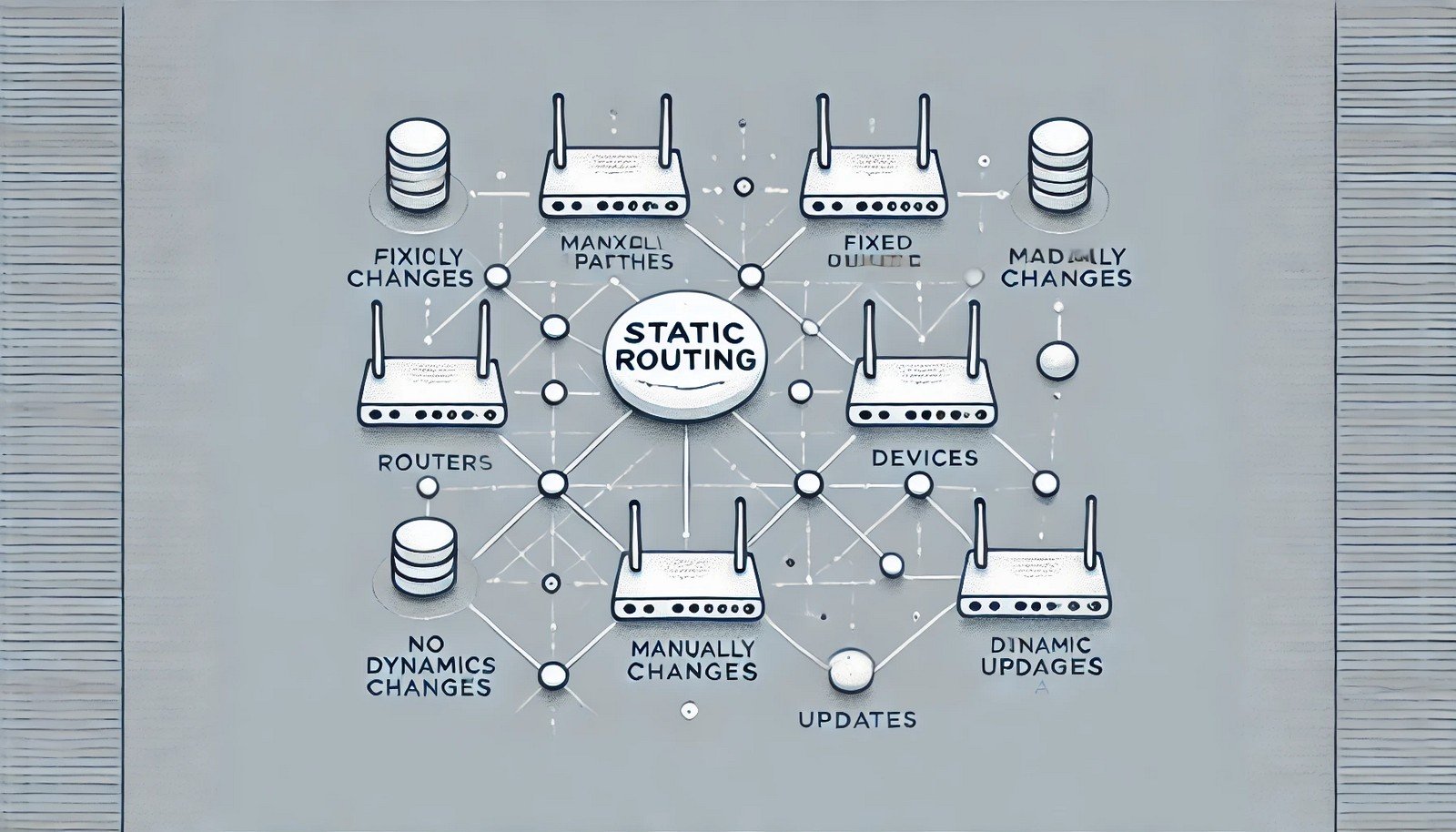Static Routing

(Representational Image | Source: Dall-E)
Quick Navigation:
- Static Routing Definition
- Static Routing Explained Easy
- Static Routing Origin
- Static Routing Etymology
- Static Routing Usage Trends
- Static Routing Usage
- Static Routing Examples in Context
- Static Routing FAQ
- Static Routing Related Words
Static Routing Definition
Static routing is a form of network routing in which routes are manually configured by a network administrator instead of being automatically learned through dynamic routing protocols. Each route must be explicitly defined, including the destination network, next-hop IP address, and subnet mask. Static routing is commonly used in small networks, in environments where minimal routing changes occur, or for specific traffic paths requiring strict control. Since it lacks automatic route updates, static routing is generally simpler but less scalable than dynamic routing.
Static Routing Explained Easy
Imagine a city with a fixed set of road signs showing drivers exactly where to go. The signs never change, even if a road closes. If a new road is built, someone must manually add new signs. Static routing works the same way—routes are set up manually, and if the network changes, an administrator must update them by hand.
Static Routing Origin
The concept of static routing predates modern networking protocols and was one of the earliest methods used to direct data traffic. Before advanced dynamic protocols like OSPF and BGP, static routing was the primary way to manage paths between networks.
Static Routing Etymology
The term "static" comes from the idea of something fixed or unchanging, while "routing" refers to directing network traffic. Together, "static routing" describes a routing method that does not automatically adapt to network changes.
Static Routing Usage Trends
Despite the dominance of dynamic routing, static routing is still widely used in environments where stability, security, and predictability are essential. It is common in small-scale networks, VPN configurations, and controlled enterprise settings. Many businesses use static routing for critical traffic that requires a predefined path without interference from automated protocols.
Static Routing Usage
- Formal/Technical Tagging:
- Network Administration
- Routing Protocols
- IT Infrastructure - Typical Collocations:
- "static routing table"
- "manual route configuration"
- "static route entry"
- "fixed IP routing"
Static Routing Examples in Context
- A small office network uses static routing to direct traffic between different departments without requiring complex dynamic protocols.
- An administrator configures static routes for a VPN connection to ensure traffic follows a specific secure path.
- Static routing is used in embedded systems where minimal configuration changes are required.
Static Routing FAQ
- What is static routing?
Static routing is a routing method where network paths are manually defined rather than dynamically learned. - When is static routing used?
It is used in small or stable networks, for security reasons, or when specific routing paths are required. - How does static routing differ from dynamic routing?
Static routing requires manual route updates, while dynamic routing automatically adapts to network changes. - What are the advantages of static routing?
It is simpler, more secure, and has less overhead than dynamic routing. - What are the disadvantages of static routing?
It does not adapt to network changes, making it difficult to manage in large networks. - What devices use static routing?
Routers, firewalls, and certain embedded network systems often use static routing. - How is a static route configured?
A network administrator manually enters the destination, subnet mask, and next-hop IP address into the router. - Is static routing suitable for large networks?
No, it is not scalable for large networks due to the need for manual updates. - Can static routing be combined with dynamic routing?
Yes, hybrid routing approaches often use static routes for specific tasks while dynamic protocols handle general traffic. - Why is static routing important in security?
Since it does not exchange route updates, static routing can reduce attack surfaces in controlled environments.
Static Routing Related Words
- Categories/Topics:
- Network Engineering
- Routing Strategies
- IT Security
Did you know?
Static routing is still a preferred method in military and aerospace networks due to its predictability and lack of reliance on external routing updates, making it more resilient to cyber threats.
PicDictionary.com is an online dictionary in pictures. If you have questions or suggestions, please reach out to us on WhatsApp or Twitter.Authors | Arjun Vishnu | @ArjunAndVishnu

I am Vishnu. I like AI, Linux, Single Board Computers, and Cloud Computing. I create the web & video content, and I also write for popular websites.
My younger brother, Arjun handles image & video editing. Together, we run a YouTube Channel that's focused on reviewing gadgets and explaining technology.



Comments powered by CComment